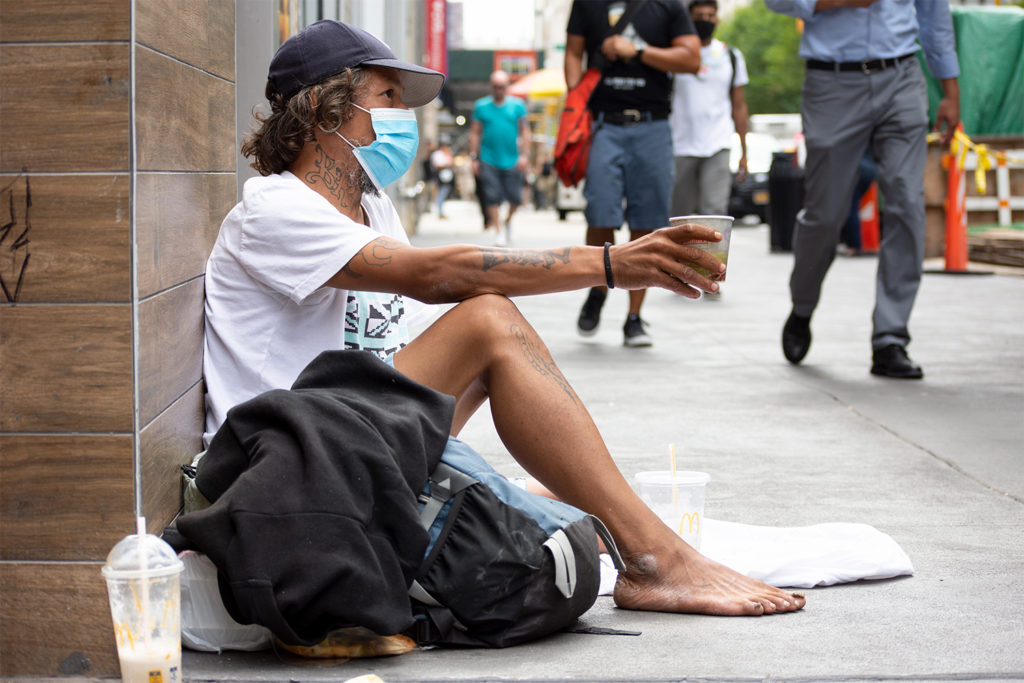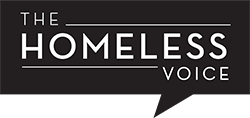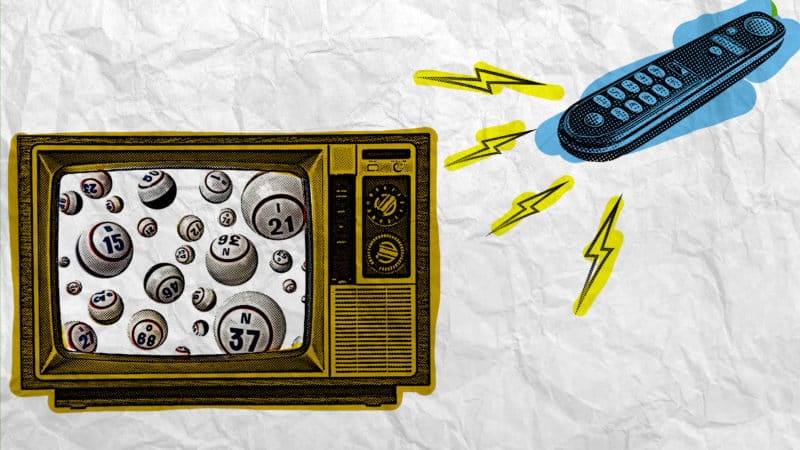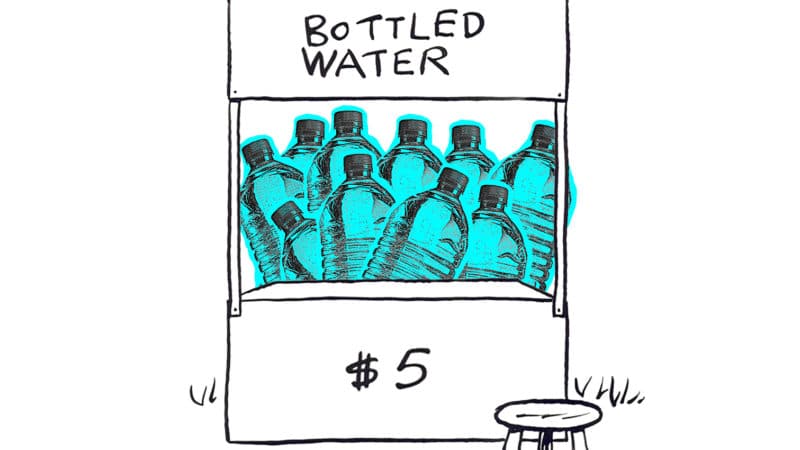Many who live on the streets depend on the Supplemental Nutrition Assistance Program (SNAP) to buy groceries, but there are no kitchens on the street, and SNAP won’t buy them hot food.
By Andrew Fraieli
For those living on the sidewalk, it’s a bit hard to cook. There aren’t usually any functioning stovetops, and it’s generally frowned upon to start a fire where people are trying to walk. So why, then, can’t a person experiencing homelessness buy pre-cooked food with SNAP?
SNAP, or Supplemental Nutrition Assistance Program, is a federal program that provides money to low-income individuals and families to buy groceries. It’s heavily relied on by those who are homeless and may not have a consistent income, but in almost every state SNAP benefits cannot be used to buy any food that is “hot at the point of sale.”
This distinctly excludes those who may not have access to a kitchen to cook, but who still depend on these benefits as their only way to afford to eat. Namely, it excludes help for those experiencing homelessness, like a man who prefers to go by Derf in New York: “You don’t know how desperate you get until you really fucking get down here. Eating out of garbage cans, man.”

Currently, only three states — Arizona, California, and Rhode Island — have functionally implemented the program meant to circumvent this aspect of SNAP, called a Restaurant Meals Program (RMP). It allows the use of SNAP benefits at approved restaurants and for prepared foods. Only the disabled, elderly and homeless are qualified for the program, as the purpose is to give more options for a nutritious meal because of their general lack of ability to use, or lack of access to, a kitchen.
Even so, the programs are limited in scope. For California, only 11 counties — such as Los Angeles, San Francisco, and San Diego — had implemented an RMP. In San Francisco, only 17 local restaurants were participating, the rest were fast food restaurants such as Subway and a few Domino’s, Burger Kings, and Carls Jr.’s among others.
“Many seniors and many homeless individuals do not have access to cooking facilities, or may not have the ability to prepare meals on their own.”
Other counties have many more participating restaurants, like Orange County, but they are again mainly fast food such as El Pollo Loco, Pizza Hut, and Subway.
The whole state of Arizona participates in the program, but almost exclusively fast food restaurants with only about 40 local restaurants compared to a couple hundred Subways. Rhode Island is similar with a single local pizza place and nine Subways.
New York is progressing a bill that would add an RMP to their SNAP benefits though. Sponsored by New York Assembly member Karines Reyes, she elaborates in an assembly meeting the necessity to allow these people to buy hot meals, “as many seniors and many homeless individuals do not have access to cooking facilities, or may not have the ability to prepare meals on their own.”
“In the spirit of making sure that they are able to receive a nutritious diet, we want to make sure that not everything that they eat is processed, preserved, or frozen,” she continued.
Each state has varying requirements to qualify for the SNAP program, as this is a federal-state program, and states have some freedom to change the qualifications. Homelessness though, is generally covered in each, as SNAP is dependent on income, and the restaurant meals program specifically highlights homelessness.
Part of New York’s SNAP requirements is a gross annual income less than $19,140. Other factors are considered, but savings generally are not. These are slightly different requirements than Florida, which does consider savings, requiring less than $2,001 in the account, but an annual income less than $25,760 before taxes.
The maximum amount one person can get is different in each state too, being $204 for New York, and $234 for Florida.
According to the U.S. Department of Agriculture (USDA), the reason hot food can’t be bought with SNAP benefits normally, and why this is an issue at all, is because SNAP’s written definition of “food” excludes prepared foods to begin with.
Created in 1964, the Food and Nutrition Act of 2008 — what it’s called now — was originally called the Food Stamp Act. As originally written, the purpose of the program was to raise nutrition in low-income households through this federal-state program, and “strengthen the agricultural economy” by more effectively distributing locally grown food surpluses.
They defined “food” as “any food or food product for human consumption except alcoholic beverages, tobacco, those foods which are identified on the package as being imported, and meat and meat products which are imported.” Further on they specify that the food is only to be bought at approved “retail food stores” that “sells food to households for home consumption.”
In 2008, the act was amended and expanded, changing the definition of “food” to include this limitation of “home consumption.”
The Restaurant Meals Program itself is a provision of the original Food Stamp Act implemented in 1977. It allows states to start these programs at their discretion. And in 1983, New York did.
So if the current bill passes, it will not be the first time New York has had a Restaurant Meals Program.

Originally, it was only for the elderly and disabled as the homeless were not considered a “specific population” at the time — that is, until 1990. Following that federal change, New York state officially expanded their restaurant meals program to include the homeless in 1994.
This only lasted until 2000 though before the entire program was dissolved, but one man experiencing homeless on the lower east side of Manhattan still remembers it fondly.
“It was beautiful,” said 50 year-old Derf. “They wanted to see how it would go,” but soon, he says, came the criticisms of the concept. “Everybody’s complaining, ‘Oh, why should they be allowed to get hot food, it means that they can get lobster,’ or ‘why should I have to pay my taxes for that.’ But what the fuck does it matter? It’s fucking food.”
“If I want to spend $55 on a lobster I’ll spend it, because I want it, I want to eat that, that’s what I want to eat, it’s my choice, it’s my prerogative,” he continued.
Keyes, the Assembly Member, also dismisses these fears, which commonly cite frequent fast food restaurant visits as a nutritional problem, saying it’s “erroneous,” as restaurants have to apply to enroll in the program and be approved by the Office of Temporary and Disability Assistance.
Criticizing the excuse of nutrition itself, she references the high sodium content in common TV dinners and soups. “We do not tell individuals, ‘you cannot buy a can of soup,’ ‘you cannot buy a TV dinner.’ Unfortunately, for many of them, that is all they purchase with their SNAP benefits because they have nowhere to prepare fresh meals.”
“Listen, I’ve done everything a man shouldn’t have to do to survive to eat.”
Derf has heard similar concerns: “That’s the other thing, they’re worried about nutrition, do they have a fucking clue how the shit that we’re eating right now isn’t good for us?”
Asked, in a given month, how much access he has to a kitchen, Derf said none.
“Listen, I’ve done everything a man shouldn’t have to do to survive to eat. Eating out of garbage cans, man, fucking disgusting. It’s the worst. But this, humiliating myself like this every fucking day, it takes a toll.”
But, at least in part, this concern over nutrition and the overtaking of fast food in these RMPs have already stagnated other state’s attempts at implementing it.
Being a federal-state program, it is up to the states to create and implement it, but it requires approval by the USDA. The approval of which was slow-moving when Illinois passed legislation in July 2019 creating the program in their state. It required the Illinois Department of Human Services (IDHS) to start operating it by January 2020, but that date came and passed without that approval.
This was also at a time when the USDA was raising eligibility requirements for SNAP.
“I don’t want to say that it is an automatic no, but we do know that there have been some challenges with the current administration and how they view people who receive public benefits and people living in poverty,” Niya Kelly, state legislative director for the Chicago Coalition for the Homeless, told Civil Eats in January 2020.
Maryland passed their bill into law in May 2019 with a December 2019 start date, with that date coming and passing without approval as well. Michigan’s program, on the other hand, doesn’t even have a start date, according to the Michigan Department of Health and Human Services.
Florida, though, actually created a pilot program in a single county in 2009, with only 14 participating restaurants, and meant solely for the homeless. But the program never expanded, and the USDA could only further elaborate that it ended in October of 2018.
According to Derf, people manipulate the SNAP benefits system constantly, be it a vendor that will illegitimately accept EBT, or the people on the street that pay it to get the hot food — breaking the law just to eat something that isn’t cold.
“I’m manipulating the system,” Def freely admits, describing another option where some vendors that sell frozen or uncooked food will just cook it for them. “But it’s tough, you’re surviving on nickels and dimes.” He gives an example of a 7-11 that will cook a frozen pizza for him, and a fish and chips restaurant that will accept his benefits. But, he says, the fish and chips was his last decent meal, three weeks prior. “I don’t know what a fucking decent meal is. McDonald’s?”
The Restaurant Meals Program is not common across the country, but states — like Maryland, Michigan, Illinois and New York — are trying to change that. With it would be an enormous change in the availability of food for people, like Derf, who struggle everyday to get by, panhandling to afford any hot food at all.
“I haven’t been able to get anything hot, just sandwiches. It’s not enough, it’s really not enough, because it’s cold food, that’s the fucking problem. It wouldn’t be if we could just go anywhere to get something to eat.”



